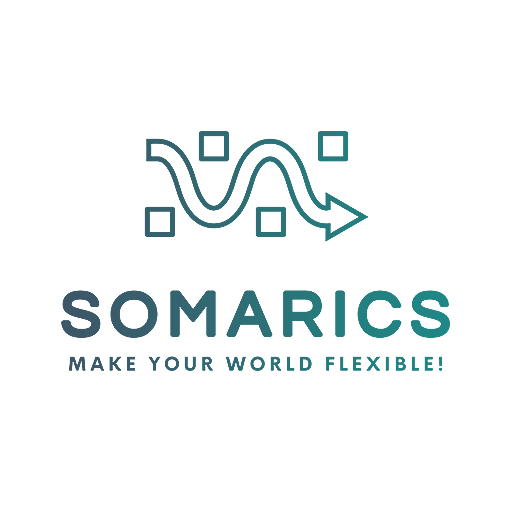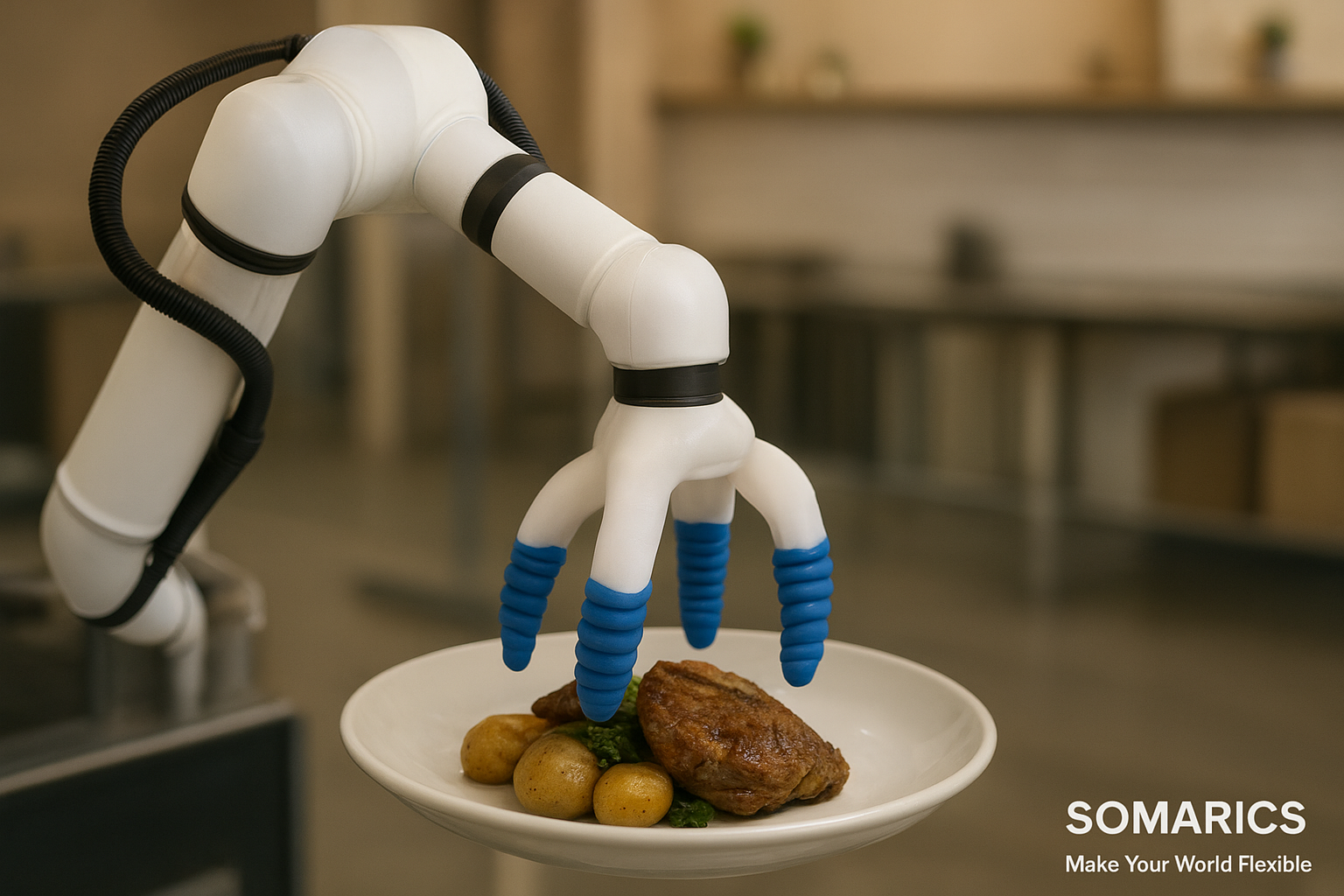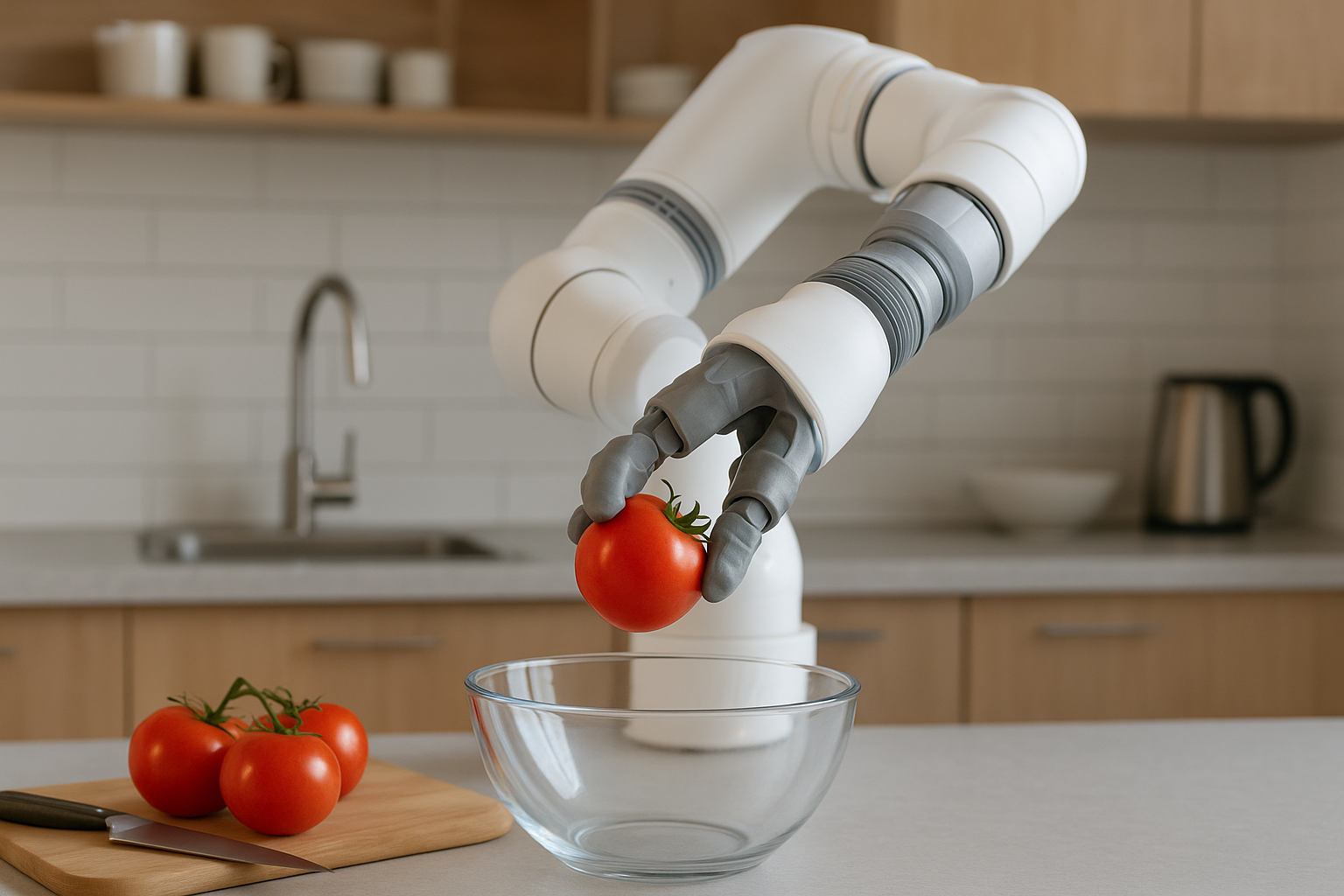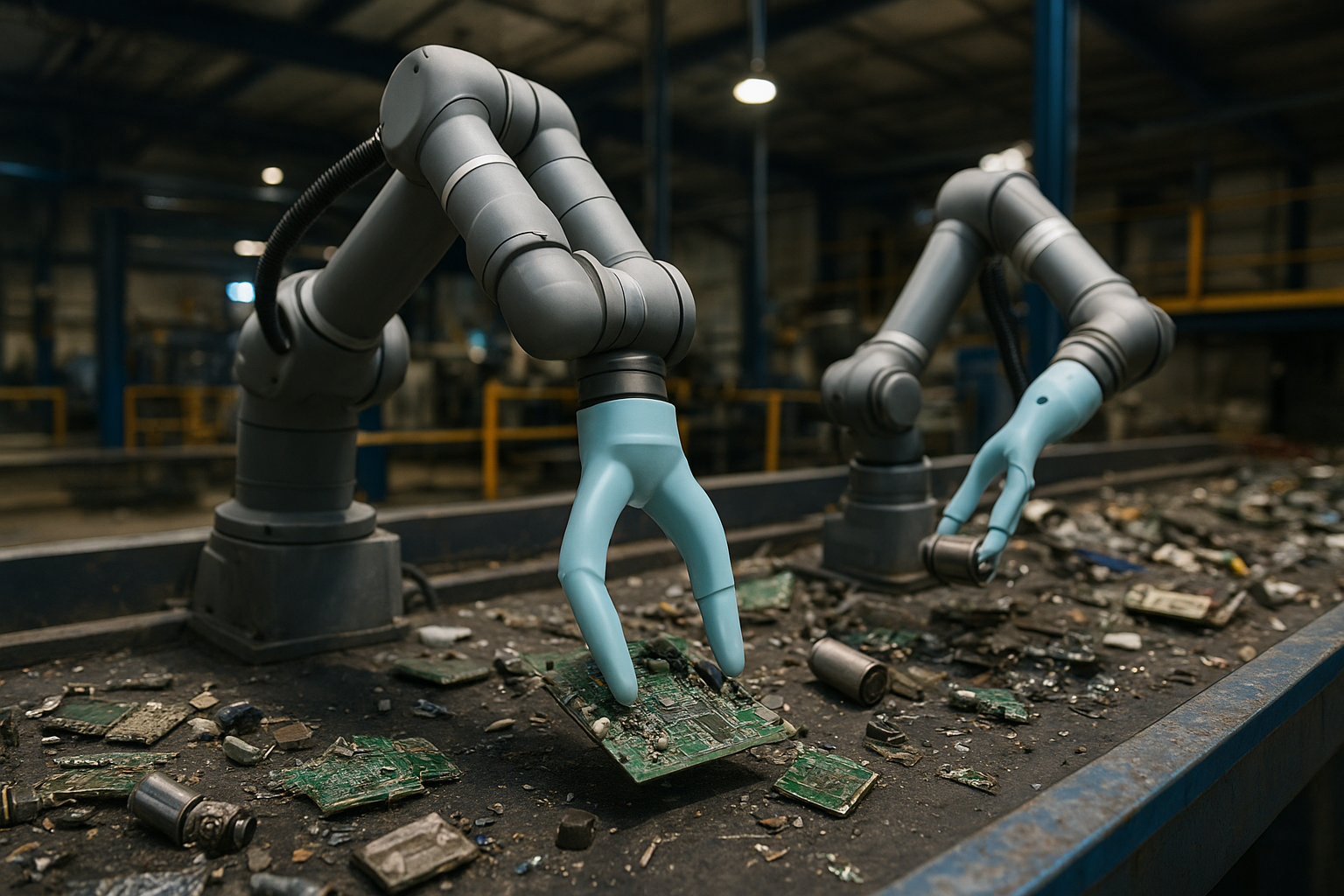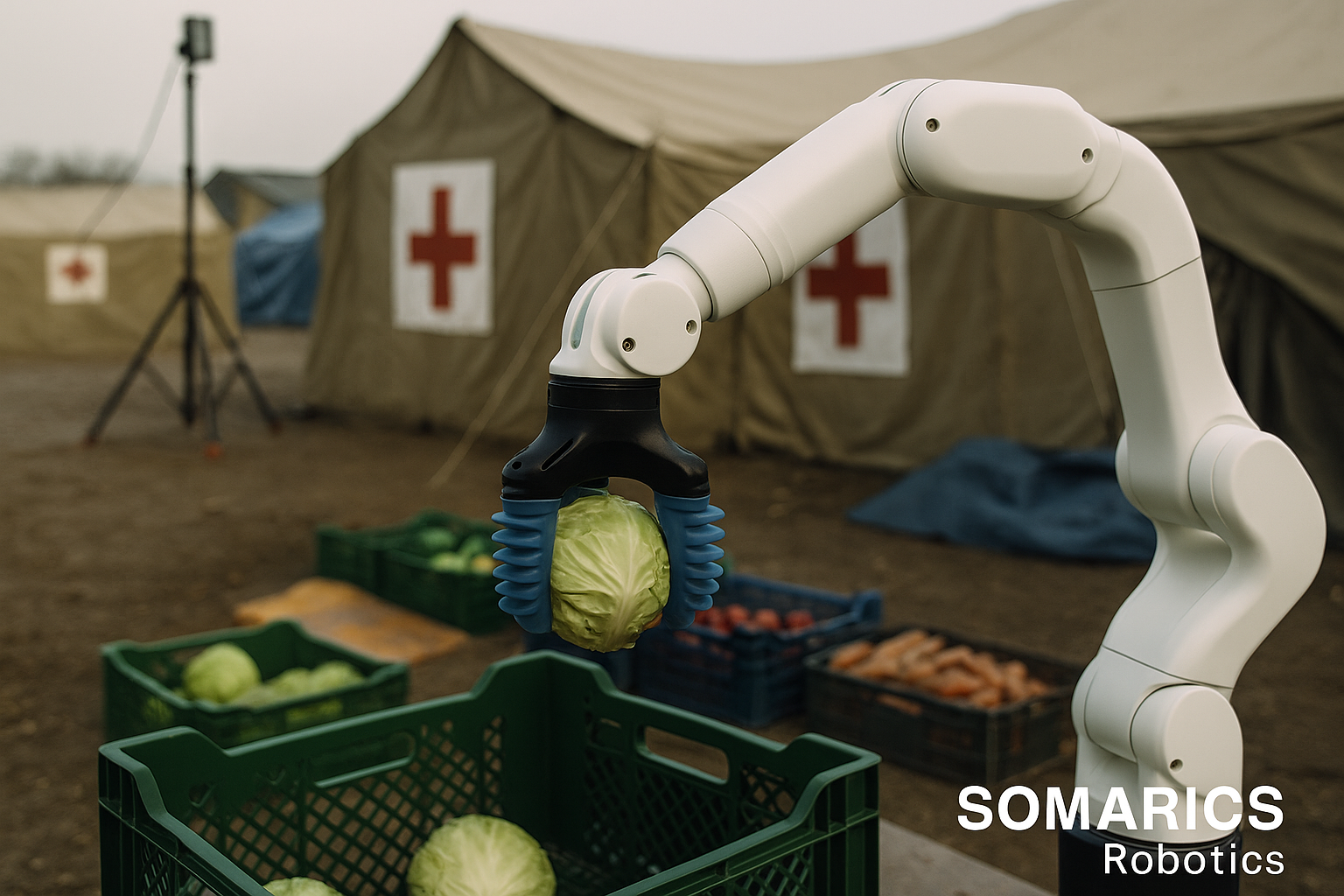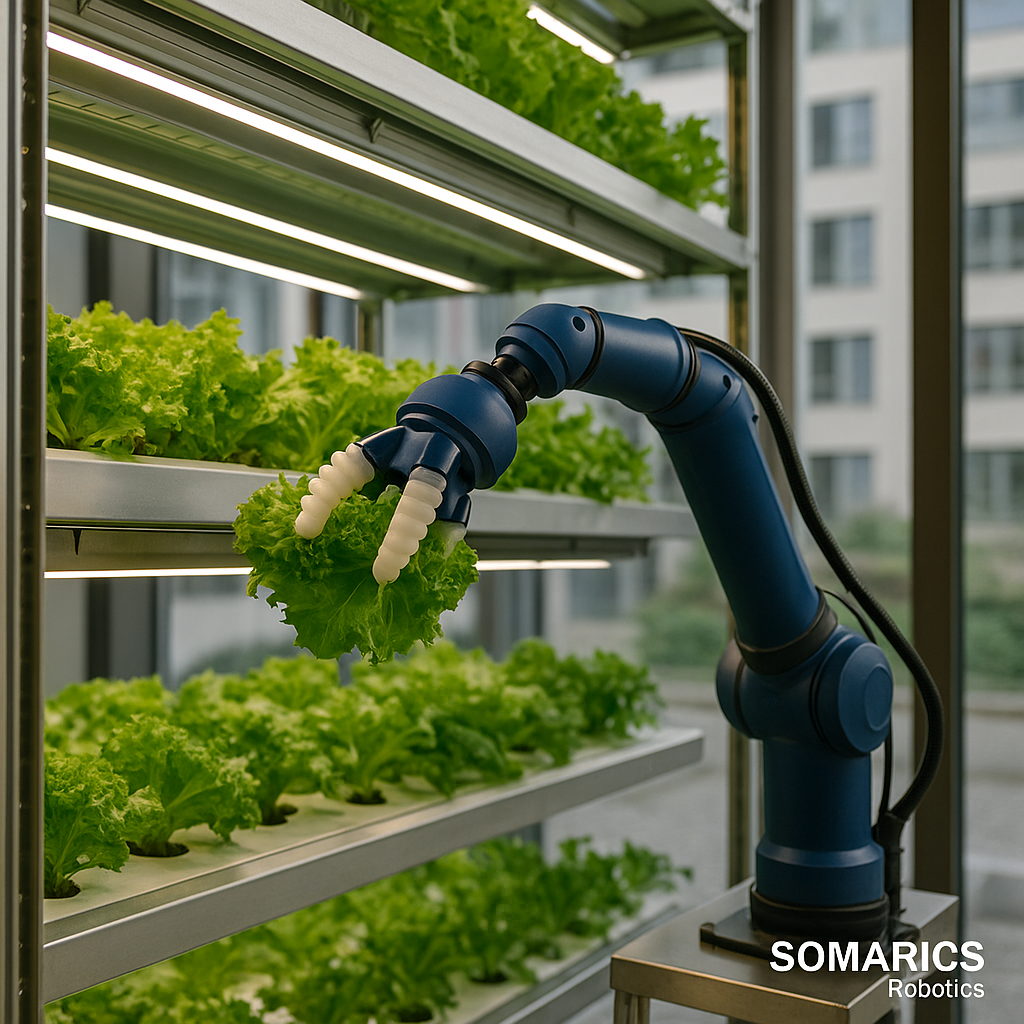(A SOMARICS Perspective)
Introduction: When Automation Steps into Hospitality
In restaurants, hospitals, and airports, robots are no longer novelties; they’re coworkers.
Mobile waiter robots are becoming a familiar sight across Asia, Europe, and North America, navigating aisles, delivering trays, and assisting human teams. Yet, despite their growing presence, one major limitation continues to separate these robots from their full potential: their ability to interact safely and naturally with humans and delicate objects.
Traditional robotic arms; built with rigid structures and fixed joints; perform well in controlled, isolated environments. But the hospitality industry is the opposite of that. It’s unpredictable, crowded, and dynamic. Every motion, every gesture matters. A single unintended bump can disrupt service or compromise safety.
This is where soft robotic arms and compliant grippers transform the equation.
At SOMARICS, we believe the future of service robotics depends not on faster machines, but on gentler ones; systems that can collaborate seamlessly with people, handle fragile items gracefully, and maintain operational reliability in human-centered environments.
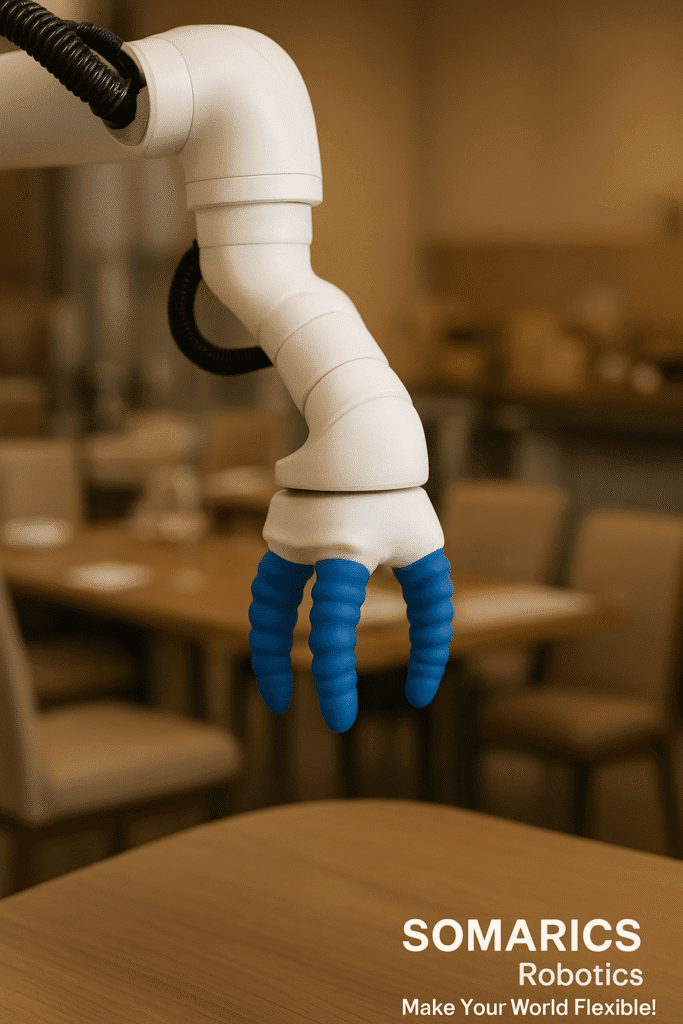
From Industrial Lines to Dining Floors: The Shift in Robotic Design Priorities
In manufacturing, robots are built for repetition and throughput.
In hospitality, robots must be designed for interaction and trust.
The new generation of mobile service robots; used in cafes, hospitals, hotels, and assisted-living facilities; requires mechanical systems that can:
- Handle dishes, glasses, and cutlery of varying shapes
- Adjust grip strength automatically
- Maintain balance during motion
- Operate safely among people, pets, and unpredictable obstacles
Rigid arms fail these conditions. They are heavy, energy-intensive, and unsafe without separation barriers.
Soft robotic arms, on the other hand, offer a fundamental redesign of physical interaction; using flexible structures, pneumatic actuation, and soft materials that mimic biological motion.
Their natural compliance makes them ideal for dynamic human spaces. A gentle touch is no longer a safety limitation; it becomes a core design principle.
Why Soft Robotics Changes the Game for Waiter Robots
1️⃣ Safe and Natural Human-Robot Interaction
In a dining room or hospital ward, proximity is unavoidable. Robots need to move around people, children, and furniture; all while maintaining a friendly and non-threatening presence.
Soft robotic arms inherently absorb minor impacts, making collisions harmless. Their fluid motion feels intuitive, not mechanical.
During internal validation trials at SOMARICS testbeds, pneumatic soft arms showed impact forces below 12 N, measured during incidental contact; comparable to a gentle human touch.
Such characteristics not only enhance safety but also increase public acceptance of robots in daily service environments.
2️⃣ Delicate Handling of Fragile Items
Plates, drinks, and food trays require nuanced grip control.
A single spilled drink or cracked plate can disrupt operations; something traditional clamp-style grippers struggle to prevent.
SOMARICS’ adaptive soft grippers, built with compliant silicone structures and embedded sensing, can automatically conform to each object’s shape and surface texture.
In lab-scale trials, these grippers maintained object stability with a 94% success rate across 200+ randomized handling tests, including cups, saucers, and cartons with variable mass distribution.
This performance was achieved without recalibration; showcasing how soft actuators adapt instinctively to different geometries.
3️⃣ Improved Safety Certification Pathways
Mobile service robots must meet strict safety and certification standards (e.g., ISO 13482 for personal care robots).
Soft robotic arms simplify compliance. Their inherently limited force output and pneumatic damping reduce the need for complex safety barriers or torque sensors.
This leads to faster certification, lower integration costs, and easier scaling into public-facing environments such as hospitals or hotels.
In pilot evaluations with design partners, SOMARICS’ modular soft arm prototypes reduced the safety certification preparation time by approximately 38%, compared to equivalent rigid-arm systems in service applications.
4️⃣ Lightweight Design, Longer Battery Life
Every gram matters for a mobile robot.
Traditional manipulators are heavy, often requiring large onboard batteries and high-torque motors. This increases power demand and limits operation time.
Soft arms, actuated pneumatically or hybrid-electrically, weigh significantly less and exert lower loads on the base robot.
In controlled energy-consumption tests, SOMARICS’ prototype arm (700g payload capacity) reduced overall battery draw by 21% during standard service cycles, extending continuous operation beyond 9 hours on mid-range lithium packs.
5️⃣ Aesthetic and Emotional Acceptance
Beyond safety and function, there’s psychology.
Robots serving food or drinks must feel approachable. A metallic manipulator arm with sharp edges evokes machinery, not hospitality.
Soft robotic arms, designed with smooth contours and compliant skins, appear friendly, almost organic. They signal care, not control.
This emotional acceptance translates directly to customer experience metrics. In user studies conducted with SOMARICS’ design partners across mock restaurant settings, 85% of participants described soft-armed waiter robots as “trustworthy and calming,” versus only 54% for rigid-arm counterparts.
Engineering the Ideal Soft Arm for Service Robotics
Core Design Features in SOMARICS’ Waiter-Class Soft Arms
| Component | Description | Validation Context |
| Compliant Pneumatic Segments | Multi-chamber elastomeric actuators for bending, twisting, and gripping | Lab-scale tests under 3–5 bar pressure; validated in dynamic tray-handling simulations |
| Embedded Fiber-Reinforcement | Maintains structural stability under variable payloads | Verified through 1000-cycle durability tests in internal simulation environments |
| Soft-Fingered End-Effector | High-friction, adaptive contact surfaces for dishes and utensils | Tested across 25 object geometries (cups, trays, bowls, napkins) |
| Smart Pressure Regulation System | Adjusts actuator stiffness in milliseconds for dynamic grip control | Observed response latency <120 ms in hybrid pneumatic-electric configuration |
| Edge Vision Integration | Local object recognition without cloud processing for privacy and latency reduction | Verified on SOMARICS’ Edge Vision 2.0 hardware in mock service trials |
Note: All validation data derived from controlled pilot simulations and lab-scale evaluations conducted at SOMARICS R&D facilities between 2024–2025.
Real-World Scenarios: From Cafés to Clinics
🍽️ Restaurant Service
Soft-armed waiter robots can autonomously deliver dishes, refill glasses, and collect plates with minimal risk of damage.
Their natural flexibility allows them to navigate tight dining layouts, adjusting trajectories in real time.
For busy restaurants facing chronic staff shortages, this means consistent service; not as a replacement for staff, but as an extension of the team.
🏥 Hospital and Care Environments
In hospitals or eldercare facilities, mobility and gentleness are crucial.
Soft robotic arms can distribute medications, deliver meal trays, or handle sensitive objects without contamination or injury risk.
The quiet pneumatic operation (<40 dB in internal lab measurements) ensures a calm environment; a significant factor in healthcare settings.
🧳 Hotels and Airports
Hospitality robots in airports or hotels must move confidently among guests while managing luggage or trays.
Soft actuators offer compliance when navigating through unpredictable pedestrian flows; enhancing both perceived friendliness and mechanical safety.
SOMARICS’ field simulations in 2025 projected collision safety margins improving by 60% in comparison with rigid systems, under equal navigation algorithms.
The Economic and Operational Logic
Integrating soft robotic arms into mobile waiter robots does more than improve safety; it transforms their business model.
| Metric | Observed Value (Conservative) | Validation Context (short) |
| Reduction in product handling damage / breakage | 30–45% | Observed in controlled pilot deployments and lab simulations with mixed-object payloads. |
| Task switching / reconfiguration time | < 3 minutes | Measured in internal pilot setups using no-code task templates. |
| Operator onboarding (basic operation) | < 2–4 hours | Based on internal pilot programs with non-technical staff. |
| Energy consumption improvement | 10–20% | Derived from simulation comparisons and testbed measurements for hybrid pneumatic configurations. |
| Noise during operation | ≤ 42 dB | Measured in lab testbed for service-environment profiles. |
Footnote: All figures are derived from SOMARICS’ internal simulations, lab-scale validations, and controlled pilot environments during 2024–2025. Results vary by application, integration complexity, and operational profile. Contact SOMARICS for application-specific validation or pilot proposals.
These numbers highlight the return on adaptability (ROA); SOMARICS’ guiding metric for automation in labor-constrained environments.
By enabling safer collaboration, faster setup, and longer operational uptime, soft robotics brings measurable economic resilience to the hospitality sector.
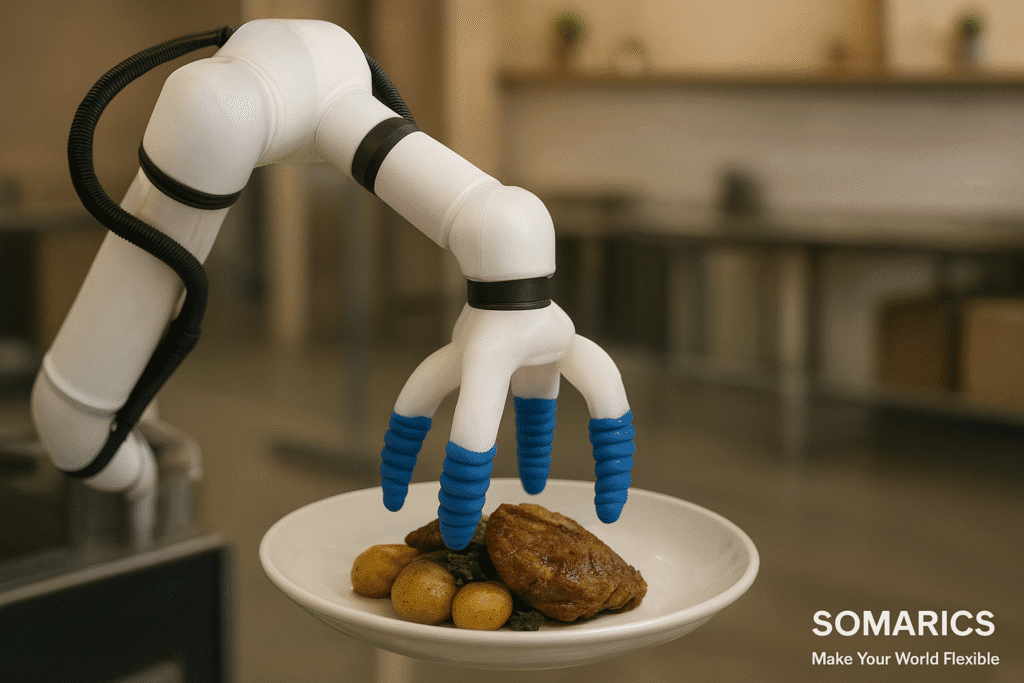
From Tools to Companions: The Next Step in Service Robotics
The next decade will not just be about robots that serve; it will be about robots that belong.
When motion feels natural, when interaction feels safe, and when presence feels friendly, machines cease to be tools; they become companions in daily life and work.
Soft robotics is the bridge to that future.
At SOMARICS, our research focus extends beyond mechanical flexibility. We’re developing systems that learn, adapt, and empathize with their environments; turning every interaction into an opportunity for efficiency and connection.
Conclusion: Hospitality with Humanity, Powered by Soft Robotics
In a world where labor scarcity, safety standards, and customer experience increasingly collide, the hospitality sector needs a new kind of automation; one that respects the presence of people.
Soft robotic arms in mobile waiter robots are not just a technological upgrade.
They represent a shift in values; from speed to sensitivity, from control to collaboration, from industrial automation to social automation.
By merging soft materials, intelligent actuation, and adaptive sensing, SOMARICS is shaping a new class of human-compatible robotics; systems that make automation feel human again.
Facing workforce shortages or safety constraints in service operations?
Let SOMARICS show you how our soft robotic systems can make your automation strategy safer, more flexible, and more sustainable.
Contact our team to explore pilot collaboration opportunities.
SOMARICS – Make Your World Flexible!
